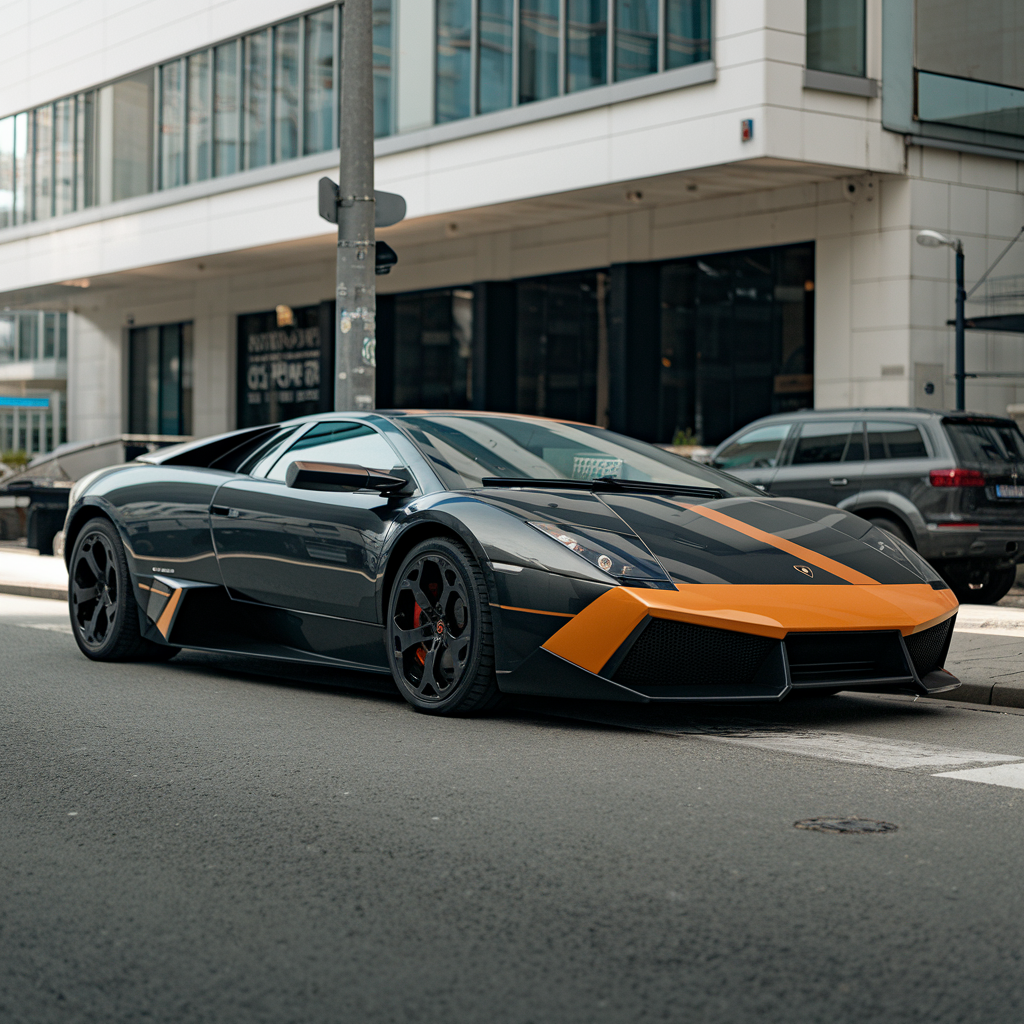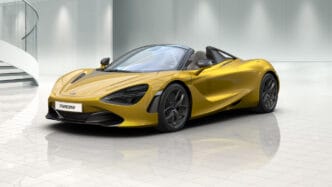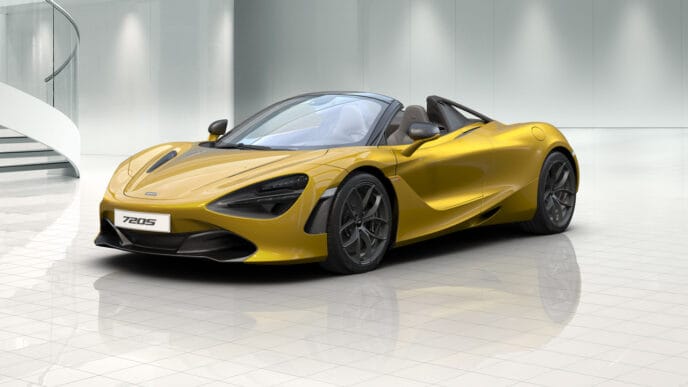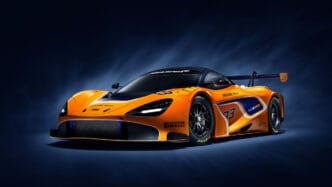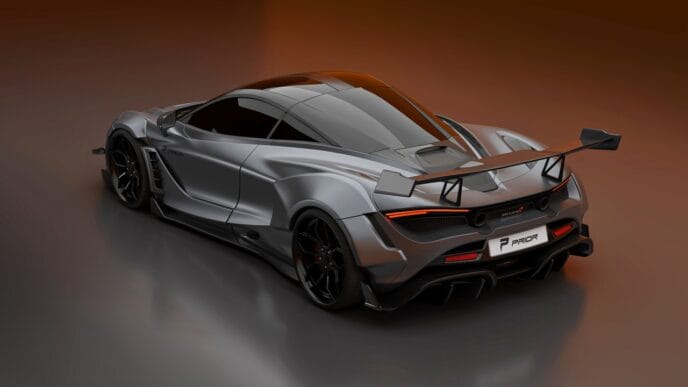When the Lamborghini Murciélago LP670-4 SuperVeloce (SV) roared onto the automotive scene in 2009, it marked the swan song for Lamborghini’s original, unfiltered V12 engine before the Aventador ushered in a new era. As the ultimate version of the Murciélago line, the SV epitomized Lamborghini’s relentless pursuit of power and charisma, blending cutting-edge technology with dramatic design. More importantly, the Murciélago SV stood apart as the best value in a hypercar market dominated by the likes of the Ferrari 599 GTO, Porsche Carrera GT, and Mercedes-Benz SLR McLaren 722 Edition.
This combination of raw, mechanical performance and theatrical flair made the Murciélago SV a true pioneer of Lamborghini’s core philosophy—creating cars that were not just fast but brimming with pantomime and charisma. It was more than just another hypercar; it was the embodiment of Lamborghini’s dedication to creating unforgettable driving experiences.
Technological Advancements: Power and Precision
At the heart of the Murciélago LP670-4 SV lay a monstrous 6.5-liter V12 engine, producing 670 horsepower and 660 Nm of torque. This output was 30 horsepower more than the standard Murciélago LP640, but the SV was also around 100 kg (220 lbs) lighter due to its extensive use of carbon fiber and other lightweight materials. This power-to-weight ratio gave the SV the edge in performance, allowing it to accelerate from 0-60 mph in just 3.2 seconds and reach a top speed of 212 mph.
Lamborghini paired this immense power with an advanced all-wheel-drive system that ensured the SV remained glued to the road, even at its limits. The six-speed E-gear automated manual transmission, operated via paddle shifters, provided quick gear changes and added to the visceral driving experience.
Engine and Performance
- Engine Type: 6.5-liter naturally aspirated V12
- Power Output: 670 horsepower @ 8,000 rpm
- Torque: 660 Nm (487 lb-ft) @ 6,500 rpm
- Top Speed: 212 mph (341 km/h)
- 0-60 mph (0-100 km/h): 3.2 seconds
Lamborghini’s use of carbon fiber extended beyond the engine bay, with the material used for the front and rear bumpers, engine cover, and parts of the interior, resulting in a more agile and responsive car. A fixed rear wing and revised front bumper enhanced the SV’s aerodynamics, with two configurations available: a high-downforce setup for improved cornering or a standard configuration for higher top speeds.
The Last of Lamborghini’s Raw V12s
The Murciélago SV was not only an evolution of the Murciélago line but also a celebration of Lamborghini’s iconic naturally aspirated V12 engine. This engine, a direct descendant of the V12 that first powered the Miura in the 1960s, represents the brand’s dedication to delivering unfiltered, mechanical performance. The Murciélago SV was one of the last cars to feature this engine before Lamborghini introduced the Aventador in 2011, which came equipped with an all-new V12 engine designed to meet stricter emissions standards and incorporate more modern technology, such as electronic controls.
While the Aventador SV is an incredible machine in its own right, the Murciélago LP670-4 SV stands apart as the final model in Lamborghini’s lineup to offer that pure, visceral V12 driving experience without the aid of advanced electronics like active aerodynamics and extensive driver-assist systems. Its rawness and mechanical purity make it a favorite among enthusiasts who value the traditional, no-frills approach to supercar design.
Technological Evolution and Mechanical Legacy
The Murciélago SV’s blend of technology and mechanical performance made it a unique offering in the Lamborghini lineup. The advanced all-wheel-drive system, carbon-ceramic brakes, and sophisticated suspension ensured that the car could handle the immense power of the V12 while providing precise control. It also incorporated Lamborghini’s electronically controlled variable aerodynamics, which adjusted the front and rear wings to optimize downforce based on speed.
However, despite these modern advancements, the SV retained an old-school Lamborghini character. Its steering was heavy, the ride was firm, and the power delivery was ferocious—features that appealed to purists. This balance of modern technology with traditional supercar thrills made the Murciélago SV a perfect send-off for Lamborghini’s legendary V12 engine.
Performance-Oriented Interior
The interior of the Murciélago SV was a stark departure from the more luxurious models that Lamborghini was producing at the time. Instead of plush leather and extensive technology features, the SV was designed with a driver-first mentality. The seats were made from lightweight Alcantara and carbon fiber, and the dashboard was simplified to reduce distractions. This track-inspired interior, combined with the engine’s roaring soundtrack, provided an immersive, focused driving experience that was all about performance.
A True Collectible and a Farewell to an Era
With only 186 units produced, the Murciélago LP670-4 SV is not just a rare supercar—it is a true collector’s item. Its status as the final raw V12 Lamborghini before the transition to the more electronically refined Aventador makes it highly sought after by enthusiasts and collectors alike. The Murciélago SV embodies everything that Lamborghini stood for in its early years: unadulterated power, striking design, and a driving experience that demanded respect.
In retrospect, the Murciélago SV is more than just another iteration of Lamborghini’s supercar lineup; it is a tribute to the brand’s history. It marked the end of an era where cars were defined by their mechanical characteristics, unassisted by the electronic aids that have become commonplace in today’s high-performance vehicles.
As the last truly raw Lamborghini V12, the Murciélago LP670-4 SV holds a special place in automotive history, bridging the gap between the wild, unfiltered supercars of the past and the more advanced, technological machines that define the present. It remains an icon of performance, representing Lamborghini’s uncompromising pursuit of speed, power, and mechanical excellence.
Theatrical Design: Lamborghini’s Signature Pantomime
Where the Murciélago SV truly separated itself from its competitors was in its design and personality. Lamborghini has always been synonymous with dramatic styling, and the SV took this to new heights. Inspired by the angular lines of jet fighters, the Murciélago SV’s wedge-shaped body, aggressive stance, and massive rear wing were striking to behold. Its Reventón-inspired rear lights, aerodynamic tweaks, and distinctive matte black paint accents made it look like a road-going fighter jet.
Comparisons with Hypercar Rivals
When compared to its hypercar rivals—the Ferrari 599 GTO, Porsche Carrera GT, and Mercedes-Benz SLR McLaren 722 Edition—the Murciélago LP670-4 SV held its own in both performance and price.
Ferrari 599 GTO
The Ferrari 599 GTO produced 661 horsepower, slightly less than the SV, and was more track-focused, offering precision handling. However, Ferrari’s GTO lacked the dramatic flair of the Murciélago SV. While the 599 GTO prioritized clinical performance and efficiency, the SV offered a more emotional and thrilling driving experience, wrapped in an aggressively styled package.
Porsche Carrera GT
The Porsche Carrera GT was lauded for its handling and its powerful 612-horsepower V10 engine, but it came at a significantly higher price. While the Carrera GT provided a more refined driving experience with its manual transmission and mid-engine layout, it couldn’t match the SV’s aggressive design or the sheer thrill of its naturally aspirated V12 engine. The SV’s lower price tag made it a better value for those seeking maximum excitement.
Mercedes-Benz SLR McLaren 722 Edition
The SLR McLaren 722 Edition featured a supercharged V8 producing 641 horsepower. Though it was fast in a straight line, the SLR was heavier and more focused on luxury than the track-oriented Murciélago SV. In terms of pure driving excitement, the SV delivered more charisma and theater, appealing to those who valued raw power and dramatic design over opulent comfort.
Value for Money and Pure Driving Experience
In a market dominated by hypercars priced well above $500,000, the Murciélago LP670-4 SV offered incredible value for money at around $450,000. This price tag was notably lower than that of its rivals, yet the SV delivered comparable, if not superior, performance. It struck a balance between track-focused performance and unbridled excitement, which gave it a distinctive edge.
The SV’s extensive use of lightweight materials, combined with its 670-horsepower V12 engine and all-wheel-drive system, resulted in a supercar that was not only powerful but also remarkably agile. It offered a more visceral and raw driving experience than its rivals, making it the go-to choice for enthusiasts who valued pure performance over luxury or refinement.
A Theatrical Masterpiece: Lamborghini’s Signature Charisma
Where Lamborghini truly distinguished the Murciélago SV was in its design and character. The SV was as much a work of art as it was a performance machine. Its angular lines, aggressive stance, and massive rear wing were inspired by fighter jets, making it an unmistakable presence on the road. The design incorporated Reventón-style rear lights, carbon-fiber accents, and aerodynamic tweaks, giving it a futuristic and aggressive look that perfectly matched its performance capabilities.
Unlike Ferrari or Porsche, which focused on refined design, Lamborghini embraced the theatrical with the Murciélago SV. It was loud, unapologetic, and demanded attention—a car that stayed true to Lamborghini’s DNA of creating supercars that were as flamboyant as they were fast. The sound of its naturally aspirated V12 engine was deafening, further enhancing its charisma and personality.
Lamborghini’s Legacy and a True Pioneer of Charisma
The Murciélago LP670-4 SV marked the end of an era for Lamborghini’s iconic naturally aspirated V12 engine. It was the last Lamborghini to feature this engine in its purest, unrefined form before the Aventador introduced a more technologically advanced powerplant and electronic controls. The Murciélago SV was not just the end of an era—it was the pinnacle of Lamborghini’s goal to create supercars that combined performance with passion and theater.
With only 186 units produced, the Murciélago SV is a true collector’s item. Its place in automotive history is secured as the last raw, unfiltered Lamborghini V12, bridging the gap between the analog supercars of the past and the more digitally controlled hypercars of the future. It is remembered not just for its performance but for its charisma, its ability to stir the emotions of anyone who encountered it, and its embodiment of Lamborghini’s relentless pursuit of creating cars that are draped in pantomime and charisma.
The Murciélago LP670-4 SuperVeloce remains an icon, a true pioneer in Lamborghini’s history, and a car that delivered more value, excitement, and drama than any of its hypercar rivals. It was a final, breathtaking display of Lamborghini’s mechanical mastery and passion for creating supercars that were not just machines, but experiences.

